
Birthday Parties at Sandcastles
Sandcastles Children’s Museum with it’s four floors of fun and a party room, is the perfect place to host your child’s next birthday party!
Photo courtesy of Historic White Pine Village
As is the case throughout North America, the very earliest inhabitants of what is now Ludington were the Native Americans. The Ottawa tribe settled near Pere Marquette Lake, which was named after Father Jacques Marquette, a Jesuit missionary who passed away on the shoreline in 1675 on his way to St. Ignace. Burr Caswell and his family arrived in 1847, the first permanent white settlers. It was a harsh wilderness of densely populated forests with no incoming roads.
It was evident by all the pines that this area would make its mark from lumber. Over the years, numerous mills popped up along Pere Marquette Lake, but because the channel was so shallow, there was no way to get the lumber out to cities like Chicago and Milwaukee. James Ludington entered the picture around 1854. He was a businessman in Milwaukee who took possession of property in Ludington that someone had defaulted on. He went into business with Charles Mears, another powerful man that had visions for the city. Ludington had Mears run his sawmill, in exchange for developing the channel…making it wider and deeper. Unfortunately for Mears, once his two-year contract was up, Ludington once again took control of the mill and had a newly improved channel in which to move his lumber. Mears was out of the picture, but was successful in his own right with many other mills in Pentwater and the Village of Lincoln. The state park in Pentwater was later named for him.
In 1873, the city of Ludington was chartered, due in part to James Ludington and the money that he put into the cause. Another major player in Ludington’s development was Eber Ward. The Ludington Lumber Company donated property to Ward’s idea of getting a railroad into town. Ward himself secured some of this property and built two mills. He was also a proponent of developing a permanent link across Lake Michigan from Ludington to Wisconsin. He died before seeing his dream come to fruition, but in the years to come, Ludington’s harbor would become home to the largest carferry fleet in the country.
James Ludington was born in 1827 in New York, and moved to Milwaukee, Wisconsin in 1843. Two years later, he and his father, Lewis founded the city of Columbus, Wisconsin. Ludington spent years as a clerk in the Old Corner Store; later becoming a proprietor. In 1854, George W. Ford borrowed money from him to begin a sawmill in the small village of Pere Marquette. Five years later, Ford defaulted on this loan, and the sawmill became the property of James Ludington. This was the beginning of his connection to the future town of Ludington.
As the village grew, Ludington and Col. John M. Loomis from Chicago began buying up acres of pine lands, providing employment and support to hundreds of men and their families. In 1867, Ludington platted the village of Pere Marquette–the same year he began the first newspaper, the Mason County Record. He eventually bought out Col. Loomis in 1869, and the property, which had greatly increased in value, was sold to the Pere Marquette Lumber Company (his former sawmill). Included in the sale was 25,000 acres of pine lands, unsold village lots, and the mills–all for the huge sum of $500,000.
James Ludington continued to put money into the village which become one of the busiest in Michigan. Ludington brought in a railroad, and provided funds for roads and bridges. He was also instrumental in securing appropriations from the government to improve the ever-important harbor.
James Ludington never married, and his body now rests in Milwaukee, Wisconsin. His contributions to this now thriving tourist town of over 8,000 lives on wherever you look. James Street and Ludington Avenue are named for him, and many streets in Ludington, Michigan bear the names of his sisters and other family members–Delia, Lavinia, Emily, Lewis, William, Robert, and Harrison.

In addition to James Ludington, the other influential figure in Ludington’s history was Justus Stearns. The name may sound familiar, as both Stearns Motor Inn and Stearns Park and both names for him. Former companies that also bore his name were The Stearns Lighting & Power Company and the J.S. Stearns Salt and Lumber Company. He ran the Epworth Hotel for ten years and was known as a caring and involved employer. In the early 1900s, the need for a hospital in Ludington prompted Justus Stearns to open his own home for use as a hospital. In 1907, the Paulina Stearns hospital opened, named for his wife. Justus Stearns continued to support the hospital in the years to come, often stopping in and paying bills himself.
Another influential figure in the history of Ludington is Father Jacques Marquette. Born in 1637 in Laon, France, Marquette became a Jesuit priest. His interest in Native Americans led him to study their language and eventual travel as a missionary to various parts of Michigan. During his travels, he met members of the Illinois tribe who told him of a “great river” (Mississippi), and invited him to teach. Wars brewing between tribes, led Marquette to the Straits of Mackinac, where he began a new mission on St. Ignace.
Permission for an expedition to find the river was granted to Marquette and Louis Joliet, a French Canadian explorer. They hoped would lead to the Pacific Ocean. On May 17, 1673, with five voyageurs, including Marquette, they departed St. Ignace and followed Lake Michigan to Green Bay. Various rivers finally brought them to the Mississippi, which they became convinced flowed into the Gulf of Mexico, and not the Pacific Ocean. When they go to the Arkansas River, they were told by friendly tribes that hostilities were imminent so the expedition decided to head back north.
They returned to spend the winter in what would become Chicago, then traveled back to Mackinac in the spring. In 1675, Marquette decided to return to the Illini tribes, but a bout of dysentery which he picked up on his Mississippi trip, began to take its toll on his health. Although, he wanted to make it back to St. Ignace, but his two French companions brought Father Marquette to the shores of Lake Michigan at what is now Ludington, Michigan, and he died on May 18, 1675. He was only 38 years old.
A large, white cross, set between Pere Marquette Lake and Lake Michigan at the spot where Marquette died, serves as a shrine to him. His body was moved in 1677 to St. Ignace, and his grave is now found in the Ojibway Museum. In honor of this great missionary and explorer, many towns, rivers, and schools are named for him, including Marquette, Michigan and Pere Marquette River and Lake in Ludington.
Throughout history, 13 carferries have called Ludington home including 9 Pere Marquette vessels, City of Saginaw, City of Flint, City of Midland, S.S. Spartan and the only one still in existence, the S.S. Badger. It all began in the late 1800s, first as a way to ship cargo across Lake Michigan, and later in the 1920’s when railroads used the carferries extensively during the war. Ludington’s carferry history almost came to an end in 1991, but was saved by local native Charles Conrad, who crossed the lake numerous times as a youth and loved the carferries. Conrad purchased the three remaining ships- the City of Midland, S.S. Spartan and S.S. Badger and resurrected cross-lake service between Ludington and Manitowoc.
The City of Midland took its last voyage in 1988 and was converted to a barge. The S.S. Spartan is docked in Ludington and is used for parts for its sister ship the S.S Badger, which is owned by Interlake Holding Company out of Ohio and is on the National Register of Historic Places.
Relive history at the Historic White Pine Village in Ludington. This living-history village from the late 19th and early 20th century inspires children and adults with its 30 historic exhibits that literally take you back in time. Walk through the home of Burr Caswell, who offered his dwelling to serve as the original 1849 Mason County Courthouse, now on the State Register of Historic Places. Discover original structures including White Pine Chapel, Pere Marquette Town Hall and Hamlin Lake Cabin. Explore the Artisan Center featuring arts and crafts from the turn of the century like weaving looms, quilting, tatting, crochet, and knitted examples on display. Peek into Cole’s General Store, the original log cabin home of Mr. and Mrs. Henry Clay Cole, and the Jorissen Barn, with displays of agricultural artifacts on several levels inside, and farm machinery from past eras of local farming history outside the barn.
Be sure to visit Mason County Sports Hall of Fame located at Historic White Pine Village to see Mason County’s sports heroes honored for their enduring legacy. This newly expanded venue emphasizes the importance of sports and how sports prepares participants to be successful in life “Beyond the game!”
The Port of Ludington Maritime Museum, perfectly located within Ludington’s former U.S. Coast Guard Station, is celebrating its fourth anniversary in 2021. The Museum was developed to showcase the maritime history of the greater Ludington area and the industries that were created by this significant port along Lake Michigan. It is now listed on the National Register of Historic Places. The Museum brings maritime history to life with digital storytelling, authentic images, artifacts, and exciting exhibits that inspire a deeper appreciation for Michigan’s maritime history. The three-story building overlooks Lake Michigan’s shoreline, Ludington’s North Breakwater Light, and the docking site of the historic Ludington carferry, the S.S. Badger.
This season, Port of Ludington Maritime Museum launched an exciting new exhibit called the Armistice Day Storm of 1940. This exhibit depicts the fateful events leading up to and throughout the extraordinary storm which took place on Lake Michigan.

Sandcastles Children’s Museum with it’s four floors of fun and a party room, is the perfect place to host your child’s next birthday party!
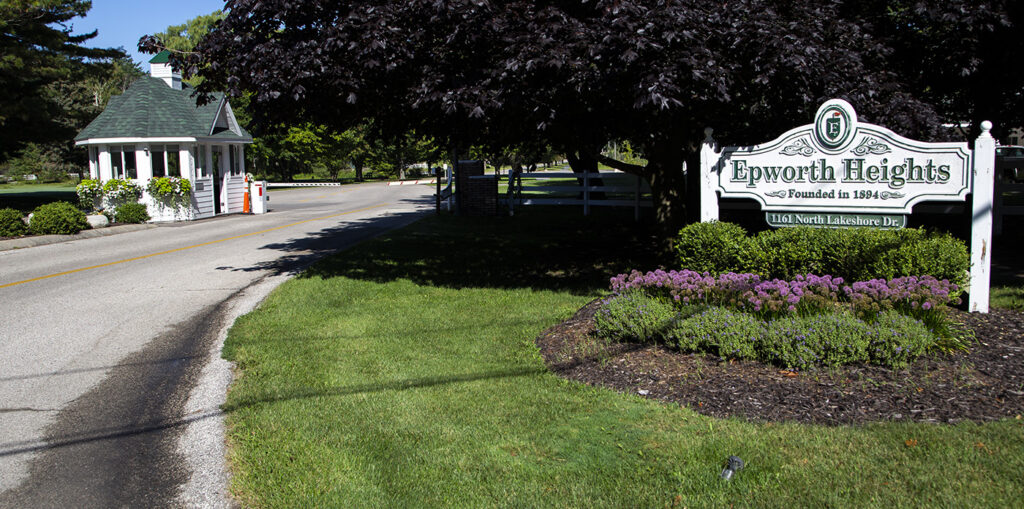
Epworth is a summer resort with a 127-year history. This gated community has activities for both members and the public.

Ludington has many community services and non-profit organizations whose missions are to help fill the gaps for those in need.
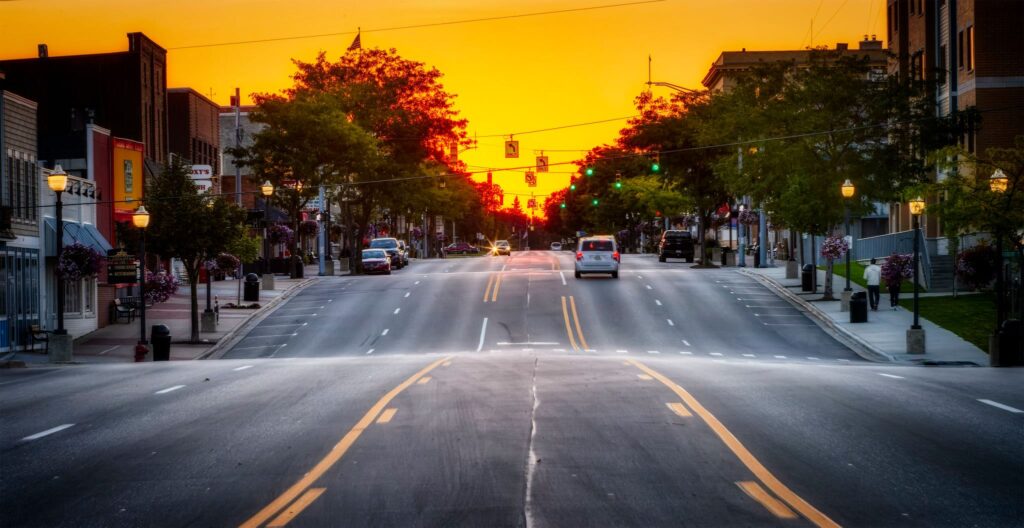
Just blocks from the beach is the heart of downtown Ludington, where you can shop, dine, and enjoy summertime events.

Ludington has many organizations that are dedicated to the health, well-being, and population control of domesticated pets.

The Stage Left Theatre Company strives to provide a variety of theatre experiences to the community and acting opportunities to all ages.
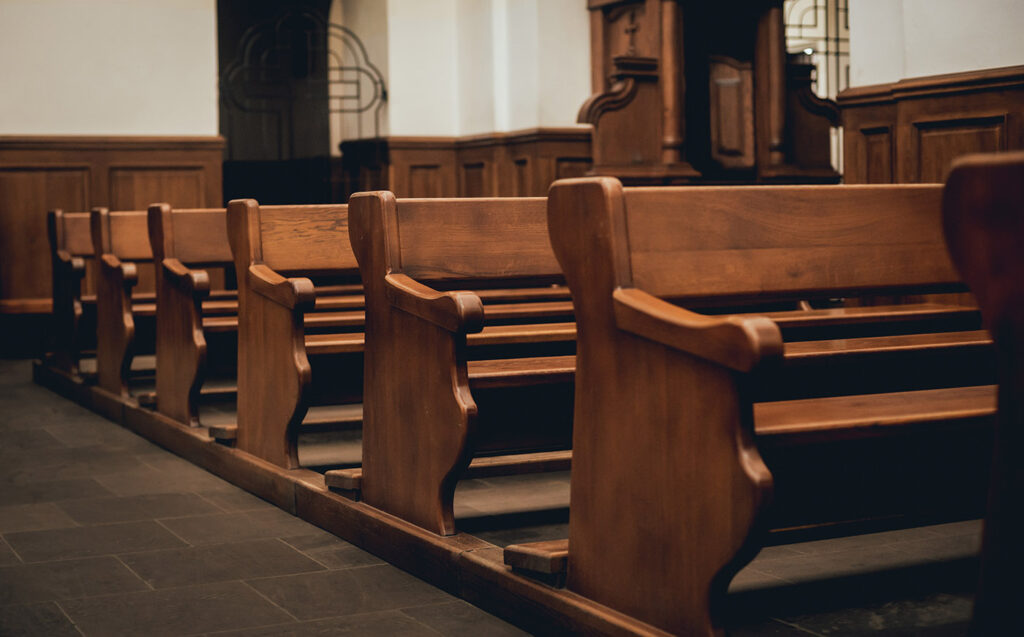
No matter your religion or beliefs, there is a place of worship for everyone in and around Ludington. See our comprehensive list here.

In the last few years, the community of Ludington has decided to start making history with attempts at breaking world records.
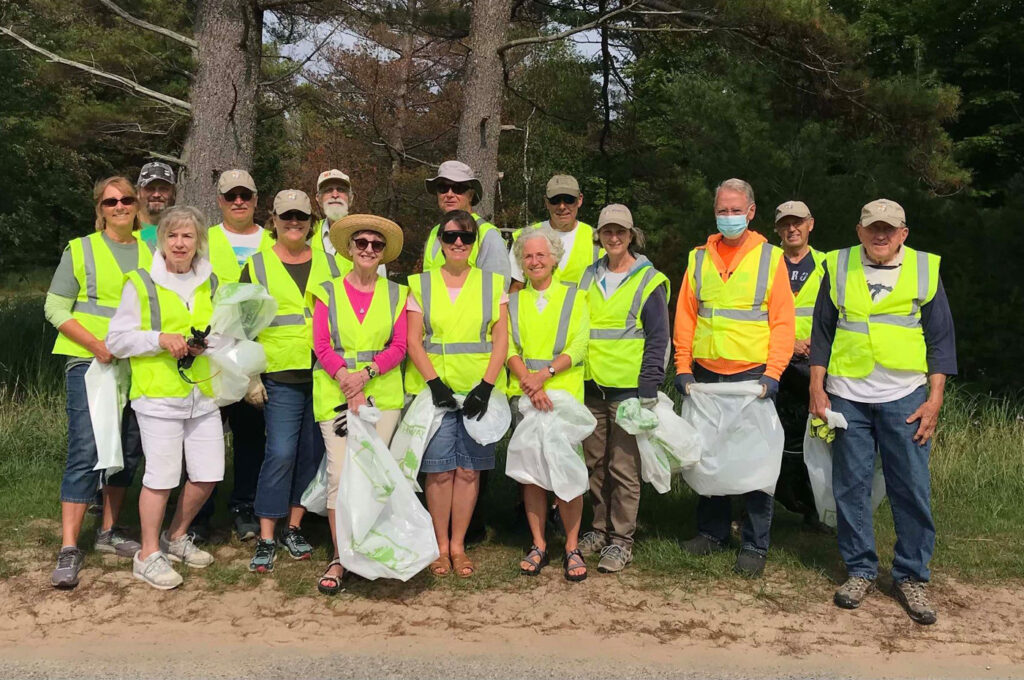
Friends of Ludington State Park is a non-profit organization dedicated to promoting wise use and conservation of the Ludington State Park.

Information on burn permits, recycling, and the leaf corral usage for Hamlin Township, located in Ludington, Michigan .
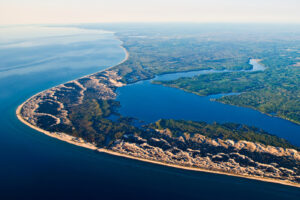
Hamlin Lake is where you want to be. It offers terrific summer recreation, including swimming, boating, tubing, and more!

Ludington has many businesses to help you enjoy crafting and appreciate the finished product. Let them help you create your own masterpiece!
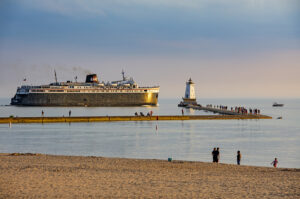
Where’s the best place to watch the S.S. Badger arrive or depart Ludington? Here are great locations for viewing the Lake Michigan Carferry.
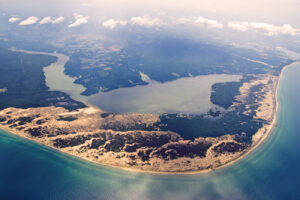
The aerial view of Big Sable Point features Hamlin Lake, Ludington State Park, and Big Sable Point Lighthouse on Lake Michigan.
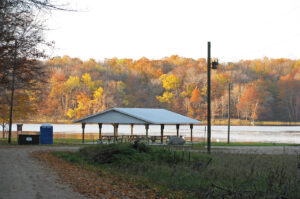
Enjoy a picnic by Upper Hamlin Lake. With grills, a pavilion and picnic tables available, this park provides the perfect family setting.

Both beginners and experienced cyclists will enjoy the variety of trails available to explore in Ludington!
Is your business located in Ludington? Contact us today to learn about advertising opportunities with VisitLudington.com.
THANK YOU!
| Cookie | Duration | Description |
|---|---|---|
| cookielawinfo-checkbox-advertisement | 1 year | Set by the GDPR Cookie Consent plugin, this cookie records the user consent for the cookies in the "Advertisement" category. |
| cookielawinfo-checkbox-analytics | 1 year | Set by the GDPR Cookie Consent plugin, this cookie records the user consent for the cookies in the "Analytics" category. |
| cookielawinfo-checkbox-functional | 1 year | The GDPR Cookie Consent plugin sets the cookie to record the user consent for the cookies in the category "Functional". |
| cookielawinfo-checkbox-necessary | 1 year | Set by the GDPR Cookie Consent plugin, this cookie records the user consent for the cookies in the "Necessary" category. |
| cookielawinfo-checkbox-others | 1 year | Set by the GDPR Cookie Consent plugin, this cookie stores user consent for cookies in the category "Others". |
| cookielawinfo-checkbox-performance | 1 year | Set by the GDPR Cookie Consent plugin, this cookie stores the user consent for cookies in the category "Performance". |
| CookieLawInfoConsent | 1 year | CookieYes sets this cookie to record the default button state of the corresponding category and the status of CCPA. It works only in coordination with the primary cookie. |
| elementor | never | The website's WordPress theme uses this cookie. It allows the website owner to implement or change the website's content in real-time. |
| rc::a | never | This cookie is set by the Google recaptcha service to identify bots to protect the website against malicious spam attacks. |
| rc::c | session | This cookie is set by the Google recaptcha service to identify bots to protect the website against malicious spam attacks. |
| viewed_cookie_policy | 1 year | The GDPR Cookie Consent plugin sets the cookie to store whether or not the user has consented to use cookies. It does not store any personal data. |
| Cookie | Duration | Description |
|---|---|---|
| _ga | 1 year 1 month 4 days | Google Analytics sets this cookie to calculate visitor, session and campaign data and track site usage for the site's analytics report. The cookie stores information anonymously and assigns a randomly generated number to recognise unique visitors. |
| _ga_* | 1 year 1 month 4 days | Google Analytics sets this cookie to store and count page views. |
| _gat_UA-* | 1 minute | Google Analytics sets this cookie for user behaviour tracking.n |
| _gid | 1 day | Google Analytics sets this cookie to store information on how visitors use a website while also creating an analytics report of the website's performance. Some of the collected data includes the number of visitors, their source, and the pages they visit anonymously. |